libavit k
 LIBAVIT K AMPUL - Danohealth
LIBAVIT K AMPUL - DanohealthWarning: The NCBI website requires JavaScript to operate. GC-FID and HPLC-DAD Methods for the Determination of Bisulfite of Sodium of Menadione Directly and through the conversion of sodium bisulfite of Menadione in Pharmaceutical Preparation The Summary was performed both in direct analysis of MSB and in MN analysis by converting MSB to MN with sodium carbonate. The GC-FID method was carried out in the HP-5 GC-FID capillary column and the HPLC-DAD methods were developed for the determination of the menadione (MN) and menadione sodium bisulfite (MSB). Through each method, quantitative analysis of MSB in commercial pharmaceuticals using nitrogen gas. The HPLC-DAD method was achieved in reverse phase C8 column using a mobile phase consisting of methanel and water. The GC-FID and HPLC-DAD calibration curves for both analytes were linear in the same concentration range (0.5–20 μg/mL). Both methods were validated in terms of precision, accuracy, recovery and detection (LOD) and quantitative (LOQ). Although the LOD values of the HPLC-DAD method (0.010 μg/mL for MN and 0.005 μg/mL for MSB) are lower than the values obtained with the GC-FID method (0.04 μg/mL for MN and 0.06 μg/mL for MSB), both methods yielded similar and favorable results in terms of accuracy and accuracy. The student's t test was applied to investigate the importance of differences between MSB determination results with the direct analysis of MSB and MN analysis by converting MSB to MN through the GC-FID and HPLC-DAD method in the form of dosage. IntroductionMenadione (2-methyl-1,4-naphthoquinone, MN) or vitamin K3 is a fat-soluble vitamin. Menadione sodium bisulphyte (MSB) () is also a synthetic vitamin K analogue that acts as provitamin. This compound is MN water-soluble salt and is widely used as synthetic K3 vitamin supplements in food and pharmaceutical products (,). MN and MSB, such as other vitamin K series compounds, are used as a cofactor required in blood clotting synthesis and bone metabolism (,). In addition, antitumor action of vitamin K3 has been investigated. Recent research indicates that the MN exhibits antitumor activity against both malignant cell lines and a variety of human tumor cells at relatively high doses (,). The MN mechanism against cancer can be explained by oxidative stress in the recycling of quinone to produce reactive oxygen species (ROS) such as hydroxyl radical peroxide, superoxide and hydrogen peroxide. The increase of MN redox-cycling and ROS production suppress the oxidative capacity of the cell, leading to cell death (,). Chemical Structure of (A) MN (B) MSB Different analytical techniques have been described in the literature, including spectrophotometry (-), spectrofluormimetry (-), voltammetry (), chem-luminescence (,), potentiometry (), liquid chromatography (-) and gas chromatography () for NM or MSB. These methods have been applied to the determination of the MN or MSB in pharmaceutical preparations. Both MN and MSB do not have fluorescence properties. Therefore, MN and MSB should react with different chemical reagents to give fluorescence properties for spectrofluometric methods. Both MN and MSB had to be derived to form a colorful complex that led to complicated operations and to consume a lot of time for spectrophotometric methods as well. Liquid chromatography methods with different detections such as ultraviolet (), fluorescence () and electrochemical () have been widely used. The columns packed with powdered zinc due to the lack of MN fluorescence properties or derivation of post columns were used in fluorimetric determination. The reduction before fluorimetric detection has been achieved through an electrochemical () or photochemical reduction (). In this case, complex and difficult systems and extra reagent consumption were required. Electrochemical detection was also used due to highly reducible property. However, this detection was not preferred for MSB to cause a strong background current. In addition, the basal drift did not cause a problem in the determination of MSB in electrochemical detection with dual serial electrodes developed by Liu et al. (). The C18 column was used in all methods of liquid chromatography of reverse phase in literature. In addition, the liquid chromatography method of normal phase was found for the determination of MSB in animal feed (). A liquid chromatological method of gas () has been reported but we were unable to obtain detailed information about this. Finally, the cerimetric method for MN determination was described by the British Pharmacopoeia (). This document describes a GC-FID and HPLC-DAD method without additional and reactive equipment for the analysis of both the direct analysis of MSB and MN analysis by converting MSB to MN in pharmaceutical preparation. Experimental Chemicals and reactants MN and MSB used as reference materials, diazepam and menatetrenone as internal standard (IS) and anhydric sodium carbonate were purchased at Sigma Company (USA). The high purity acetonytrile, hexane, methanol and concentrated HCl were obtained from Merck Company (Germany). Milli-Q reactive water was used (Millipore, USA). Libavit The K® ampoule containing about 20 mg MSB/2 mL (i.e. 12.2 MN/2 mL) was obtained from the local market. Instrumental parameters For the GC-FID method: Agilent 6890N The network gas chromatograph was equipped with a division/wireless injector, flame ionization detector (FID) and an Agilent 7683 series automatic sampler. The HP-5 capillary column with a thickness of 0.25 μm coated with fenil 5%, phase 95% of dimethylpolysiloxane (30 m x 0.320 mm I.D., USA) was used for analysis. The carrier gas was nitrogen adjusted to deliver a flow column of 2 mL/min to the initial temperature of the oven. The hydrogen and synthetic air flows were set at 40 and 400 mL/min respectively for the detector with a 40 mL/min flow of makeup gas. Input temperature and injection detector remained at 300 °C. For both MN and MSB analysis, the column temperature remained at 150 °C (initial temperature) for 1 min and 100 to 260 °C at a speed of 30 °C/min and then at 300 °C at a speed of 50 °C/min with a final retention time of 3 min. For the HPLC-DAD method: MN and MSB analysis were performed by a P 1500 thermocratic spectrum system along with an Agilent Extend C8 analytical column (150 mm × 4.6 mm I.D., 5 μm) maintained at 30 °C. Isocratic elution with a mobile phase of methanel and water (60:40, v/v) was used for MSB analysis. The gradient elution with a mobile phase, including methanel and water, was used for MN analysis. A gradient elution was performed as follows: 90% of methanol was used in the first four minutes and then the percentage of methanol increased linearly to 100% for 0.5 min, and then to 100% during the next 7.5 min. The flow rate was 1 mL/min. The MN and MSB were monitored in the UV wavelength of 330 nm and 230 nm respectively. Standard solutions preparations 1) Standard MN working solutions (0.5-20 QC) solutions (prepared by diluted stock solution (μ with hexan for both chromatograph methods.2) The MSB stock solution was prepared at 2 mg/mL of acetonitrile concentration for the GC-FID method and deionized water for the HPLC-DAD method and then prepared standard working solutions (the 0.5-20 range and QC samples (disolvents) 3) 2.5 g/mL of diazepam solutions were prepared in acetonitrile that were used as IS for the chromatographic solutions. (4) Two different concentrations of menatetrenone that were 22.5 g/mL (for the GC-FID method) and 5 g/mL (for the HPLC-DAD method) were prepared in hexane for the proposed chromatographic methods. Both were used as IS for chromatological methods proposed.5) A chloric acid solution of 0.01 M was made by dilution of concentrated chloric acid.6) An anhydric sodium carbonate solution was prepared in percentage 10.6, concentration of w/v in deionized water.7) Libavit K® (Mefar Drug Company, Turkey; in solution, by 1 mL: 10 mg MSB and injection excipients Procedure conversion from MSB to MN MSB becomes MN in pH ratio11 (10 mg MSB is equivalent 6.1 mg MN) (14). In order to convert MSB to MN, the following procedure should be followed: first, standard working solutions were added from MSB and menatetrenone to 0.2 mL The solution 0.01 M HCl and vortexed for 10 min and then 0.5 mL anhydric sodium carbonate solution (10.6 %) (to shift the MSB to the water insoluble MN) and 2 mL n-hexane (to extract) Second, the standard MN and menatetrenone work solutions were added to the 0.2 mL 0.01 M HCl and vortexed solution for 10 min and then 0.5 mL anhydric sodium carbonate solution (10.6%) (to provide the same condition) and 2 mL n-hexano (to extract MN and IS from the water phase) were added to a centrifugal tube. The A and B solutions were vortexed for 5 min and centrifuged to 3000 g for 30 min. Finally, the upper layers of n-hexane were filtered through phonomenex 0.45 μm pore size (25 mm filter) and transferred to a self-sampler road for analysis. 2 μL and 20 μL were injected into GC-FID and HPLC-DAD systems, respectively. Medicine preparations solutions For direct analysis of MSB: 2.0 mL of Libavit K® containing 20.0 mg MSB was transferred to a volumetric bottle of 100 mL. 50 mL solvent was added and the bottle was sounded. The bottle was filled with acetonytrile and the final concentration was 200 μg/mL. The stock solution was diluted with acetonitrile in concentration of 25 and 50 ug/mL. 1 mL of solutions obtained was transferred to a volumetric bottle of 10 mL and the diazepam was added of 0.25 mL (100 μg/mL) and the acetonitrile jar was filled. Drug mixtures containing 2.5 and 5 μg/mL MSB and 2.5 μg/m Diazepam was analyzed L using GC-FID and HPLC-DAD procedures. For MN analysis by converting MSB to MN: 1.0 mL from Libavit K® containing 10.0 mg of MSB (i.e., 6.1 mg MN) was transferred to a volumetric flask of 100 mL. 50 mL 0.01 M HCl solution was added and the jar was sounded. The bottle was filled with the 0.01 M HCl solution and the final MSB concentration was 100 μg/mL. Two different MSB concentrations equal to 6.1 μg/mL and 12.2 μg/m L of MN were prepared from this stock solution. After that menatetrenone and these drug solutions were transferred into centrifugal tubes and then a 0.5 mL (0.6 %, w/v) and 2 mL n-hexano were added. This solution was vortexed for 5 min and centrifugado to 3000 g for 30 min. The upper layers of n-hexane were filtered and then the drug mixture containing 6.1 μg/mL and 12.2 μg/mL of MN and 22.5 μg/mL (for the GC-FID method) and 5 μg/mL (for the HPLC-DAD method) of menatetrenone were analyzed through proposed procedures. Validation of the method The specificities of the chromatographic methods were determined by accurately measuring the analytic response in the presence of IS and all the potential components of the sample. Linearity was shown to trace the peak-area ratio of analyte values (MN or MSB) to their IS values versus the concentration of analyte. Intra-day accuracy was determined by the analysis of six replicas of QC samples in one day. The accuracy between days was determined by the analysis of QC samples in three separate days. Intra-day and inter-day accuracy were defined as the relative percentage of standard deviation (RSD %) and accuracy was defined by calculating relative error (RE). For the recovery study, the relievers of a synthetic ampoule solution were spitted separately with known amounts (CO samples) of standard MSB or MN and then analyzed using the proposed methods. All measurements were repeated six times. Recovery data were determined by comparing the ratio between the maximum observed level and that of unprocessed standard solutions. The sensitivities of the methods indicated the detection limit (LOD) and the quantification limit (LOQ). The LOD was defined as the lowest concentration of the drug that led to a signal-to-noise ratio of 3:1. To calculate LOQ, a signal to noise ratio of 10:1 formula was used. MN and MSB stabilitys were evaluated with the HPLC-DAD method by analyzing QC samples at concentrations including low, medium and higher calibration curve ranges for different temperatures [room (25 °C), refrigerator (4 °C) and frozen (-20 °C)] and times (6 h, 24 h, 48 h and 60 h). The results were evaluated by comparing these measurements to standards and expressed as a percentage deviation and was accepted as an average analysis recovery ±10 values were stable. Statistical analysis of the results obtained from the proposed methods All statistical calculations were performed with the Statistical Product and Service Solutions (SPSS) for windows, version 11.5. If the calculated p values are 0.05 or less, the correlations were considered statistically significant. Results and deliberations Optimization of GC-FID conditions Both MN and MSB were analyzed with the same GC-FID method. A HP5 capillary column was selected for MN and MSB analysis. To achieve the requested sensitivity, a less partition was used in the injection of samples. The late inflow time was set to 1 min, so most of the injected sample was introduced into the column and the reproducibility of the maximum heights for both analytics and their IS was maximized. Detection temperatures ranging from 300 to 350 °C had no effect on the maximum heights and MN and MSB areas. Therefore, a temperature for the FID detector was selected as 300 °C. The maximum heights and peak areas of the analites and the IS increased when the injection inlet temperature increased from 200 to 300 °C, after this temperature, there was no increase in peak heights and peak areas of the samples. There was no evidence to show thermal decomposition of analytes and their IS with the input temperature up to 300 °C. Because of this, it selected an entry temperature of 300 °C to achieve better sensitivity and reproducibility in the trial. In these chromatographic conditions, the accuracy of the system determined by prepared sample injection five times found that it was not more than 0.5% in most cases. Optimization of HPLC-DAD conditions To investigate a more convenient and simple mobile phase, several solvent mixtures containing acetonitrile or methanel and water were examined. The execution time of both MSBs with diazepam and MN with menatetrone increased with the addition of acetonitrile in the mobile phase. So, methanel was used as an organic modifier. While MN and diazepam were analyzed with isocratic elution, MSB and menatetrenone were analyzed with gradient elution. In both cases, water and methanel in different ratios were used for elution. In addition to this, different types of flow (0,5, 0.75, 1 and 1.5 mL/min) and column temperatures (environment, 20 °C, 30 °C, 35 °C). It was found that both analytes were excellently removed at a flow temperature of 1 mL/min and column of 30 °C, appropriately. PH optimization while converting MSB to MN The effect of pH in converting MSB to water-soluble MN was discussed in several pH values at 9.50, 10.50, 11.10, 11.20, 11.30 and 11.50. As seen in, the best condition for conversion was obtained at pH= 11.30. The effect of pH in converting MSB to MN Validation of the GC-FID method applied for MSB and MN analysis The developed GC-FID method appears to be specific both for direct analysis of MSB and for analysis of its converted form (MN) in drug products. While retention times set for MSB and diazepam peak were 4.7 min and 7.8 min respectively, these times for MN peak and menatetrenone were 4.6 min and 12.7 min. The total execution times of the analysis were 8 min and 13 min, respectively. show the overlap of the typical chromat chart obtained from the GC-FID analysis of MSB and MN in the concentration of 0.5-20 μg/mL containing IS. GC-FID concentration charts obtained in calibration chart (A) standard MN solution to contain menatetrenone (B) standard MSB solution to contain diazepam. The linear calibration range was in the concentration range of 0.5–20 μg/mL for both analytics. The correlation coefficient (R) and regression equations for MSB and MN were Y1=0.2467x1+0.0317 [Standard diversion of the regression line (Sa): 0.0352, Standard deviation of the regression line slope (Sb): 0.0118] and Y2=0.0677xtren2+0.0070 [Sa: 0.0100 and Sb: In the current test conditions, LOD and LOQ for MSB were found 0.06 and 0.08 μg/mL. LOD and LOQ for MN were also found 0.04 and 0.06 μg/mL. The accuracy and accuracy intra-day and inter-day of the GC-FID method for both analytes were listed in . According to the analyzed results of MSB, RSD % intra-day and RE were less than 4.9% and ± 2.4% and inter-day RSD % and RE were less than 7.5% and ± 2.9% in the concentration of QC, respectively. According to MN analysis results, RSD % intraday and RSD were less than 5.9% and ± 3.6, and RSD % interceded and RE were less than 7.4% and ± 4.4 in the QC concentration, respectively. The accuracy and accuracy results of data obtained from both MSB and MN analysis were similar and favorable. Table 1 MSB and MN precision and precision values Method Compound Added (g/mL) Intra-day Inter-day FoundSD (g/mL) Precision Precision RSD % FoundSD (g/mL) Precision Precision RSD % GC-FIDMSB0.7500.7320.036-2.4094.89700.056-0.35.4615.0004.8970.231-2.0564.7134.8550.348-2.8917.16210.0010.040.4290.9450.571 Recovery in the GC-FID method was determined by adding standard MN and MSB solution to the separate drug solution. To determine the recovery of MSB, 0.75, 5 and 10 to 5 from MSB that were prepared from the Libavit K® ampoule and then MSB quantification was analyzed by the GC-FID method. To determine the recovery of MN, 0.75, 5 and 10 to 10 i.e. 6.1 MN) that was prepared from the Libavit K® ampoule and then the quantification of MN was analyzed by this method. The experiments of each level were repeated six times. The results were given and the recovery values of MSB and MN were 94.1 %-97.9 % and 97.1 %-98.5 % with good accuracy, respectively. Table 2Recover the standard solution values spitted in pharmaceutical preparation Method Commercial preparation Added (g/mL) FoundSD (g/mL) Recovery (%) RSD % GC-FIDLibavit K®5g/mL0.750b0.7210.04096.245.5445.000b4.7050.33894.107.19010.00b9.7920.48597.924.956Libavit K®6.1d g/mL0.750c0.7280.05497.137.3265,000c4.8780.22697.564.63810.00c HPLC-DADLibavit K®5g/mL0.750b0.7360.038.205.2175.000b4.7400.14894.803.14210.00b9.6950.43196.954.452Libavit K®6.1d g/mL0.750c0.7540.040100.55.3945.000c4.9480.34598.966.975190c985. Validation of the HPLC-DAD method applied for MSB and MN analysis The developed GC-FID method appears to be specific to MN and MSB in drug products. The HPLC methods were faster than the GC-FID method in terms of their analytic elution time. We have studied in two HPLC analysis with different mobile phases and wavelength. In the first, we analyze MSB and diazepam. MSB and diazepam retention times were 2.2 min and 9.3 min respectively. The second analysis was applied to determine MN and menatetrenone. The retention times of MN and menatetrenone are 2.7 min and 8.05 min respectively. Meanwhile, the total execution time in the first analysis was 9.5 min, this time in the second analysis was 8.1 min. The overlap of the typical chromat chart obtained from the MSB and MN HPLC analysis in the concentration of 0.5-20 μg/m L containing its own IS was shown in . Calibration curves were linear in the same concentration range (0.5–20 μg/mL) with GC-FID for both analytics. The regression equations for MSB and MN were Y1=0.6348x1+0.0502 [Sa: 0.0789 and Sb: 0.0186] and Y2=1.0498x2+0.0656 [Sa: 0.1542 and Sb: 0.0659] (x1: MSB concentration, x2: MN concentration, Y1: the peak-area ratio of MSB to diazepam. The concentration HPLC-DAD chromatographs obtained in the calibration chart (A) standard MN solution to contain menatetrenone (B) standard MSB solution to contain the MSB diazepamLOD value was found at 0.005 μg/mL, this parameter was determined to be 0.01 μg/mL for MN. The LOQ value of MSB and MN was also 0.015 μg/mL.The results of the accuracy and accuracy intra-day and inter-day obtained with HPLC-DAD for both methods were shown in . According to the results analyzed of MSB, the RSD % intra-day and RE were less than 2.4% and ± 1.7 and the RSD % inter-day and RE were less than 4.4% and ±6 respectively. According to MN analysis results, RSD % intra-day and RE were less than 6% and ± 5.8 and RSD inter-day and RSD were less than 7.8% and ± 4.7 in the QC concentration, respectively. Recovery in the HPLC-DAD method was also determined by adding the MN and MSB standard separately. To determine MSB recovery, 0.75, 5 and 10 to 5 of MSB that was prepared from the Libavit K® ampoule and then MSB quantification was analyzed by the GC-FID method. To determine the recovery of MN, 0.75, 5 and 10 to 10, i.e., 6.1 MN) from the Libavit K® blistering and then the quantification of MN was analyzed in that way. The experiment of each level was repeated six times. The results were given and the recovery values of MSB and MN were 94.8 %-98.2 % and 98.5 %-100.5 % with good accuracy, respectively. The related stability experiment indicated that MSB was stable for 24 h to 4 °C and 25 °C and at least 60 h to -20 °C while MN was stable for 24 h to 25 °C and at least 60h to 4 °C and -20 °C. The stability results were summarized in .Table 3Stability MN and MSB values in standard solution Stability (Recovery % SD) Compound Added (g/mL) 6 h 24 hours 48 h 60 h 5.9± 3.0± 3.00.03.0 3.0.3.0 3.0.3.0 3.0.3.0 3.0.3.0 3.0.3.0 3.0.3.0 3.9 ± 3.9 ± 3.9 ± 3.9 ± 3.9 ± 3.9 ± 3.9 ± 3.9 ± 3.9 ± 3.9 ± 3.9 ± 3.9 ± 3.9 ± 3.9 ± 3.9 ± 3.9 20°CMSB 24 h48 h60 h0.75097.52±3.53195.60±2.43294.04±1.1855.00099.26±3.28696.17±3.40095.66±1.58810.0095.61±2.73095,70±2.89495.09±2.974MN0.75098±0,67±01106.948 standard decay: no=3. MSB to MN conversion ratio To determine the MSB to MN conversion rate with HPLC-DAD and GC-FID, MSB and MN studies were added to the 0.01 M HCl solution separately. To provide the same concentration ranges (0.061-12.2 μg/mL for the HPLC-DAD method and 0.61-36.6 μg/mL for the GC-FID method) for each of the two analytes, the MSB became MN as described above section and then extracted with n-hexane. For the GC-FID method: MN and IS recoveries were added to 0.01 M HCl were 98.9 % (RWD %: 2.7% n=6) and 96.8 % (RWD %: 2.1 %, n=6), respectively. MSB recoverys converted to MN and IS were of 96.9 % (RSD %: 6.3 %, n=6) and 98.1 % (RSD%: 4.1%, n=6), respectively. Consequently, the conversion rate of MSB to MN was determined at 98.1 per cent (RSD per cent: 6.0 per cent, n=6). For the HPLC method: MN and IS recoveries added to 0.01 M HCl were 101.1% (RSD %: 1.7 %, n=6) and 96.1 % (RSD %: 2.5 %, n=6), respectively. MSB recoverys converted to MN and IS were 98.1 % (RSD %: 5.1 %, n=6) and 95.9 % (RSD %: 1.8 %, n=6), respectively. The conversion rate of MSB to MN was determined at 97.2 % (RSD %: 6.2 %, n=6). Application and comparison of p proposed methods The developed methods GC-FID (method 1) and HPLC-DAD (method 2) were applied to determine MSB in the Libavit K® ampoule (Mefar Drug Company, Turkey). The quantitative analysis of MSB in commercial pharmaceuticals was performed both in direct analysis of MSB (analysis 1) and in MN analysis by converting MSB to MN (analysis 2). The GC-FID chromatographs obtained from the direct analysis of MSB and MN analysis by converting MSB to MN in drug solution were shown in , respectively. The HPLC-DAD chromatographs obtained from the direct analysis of MSB and MN analysis by converting MSB to MN in drug solution were shown in , respectively. GC-FID Chromatogram of Libavit K® apoule solutions containing MSB (A) direct analysis of MSB (B) MN analysis by converting MSB to MNHPLC Libavit K® apoule solution chart containing MSB (A) direct analysis of MSB (B) MN analysis by converting MSB to MNIntra-methods Method n Found e SD (mg) Recorvery (%) R.S.D a (%) Confidence Interval t - values t - values GC-FIDdirect analysis of MSB1219.660.95598.314.85593.29-109.6 t c=0.435(P=0.549) t c=-1.450(P=0.622. for direct analysis)tc=-0.038(P=0.267.for conversion analysis) MN analysis by converting MSB to MN1219.871.41499.387.11583.20-113.0HPLC-DAIndirect dialysis of MSB1219.090.97095.465.08187-2-102.5 t c=2.191(P=0.161) MN analysis by converting MSB to MN1219.850.72699.293.65692.44-105.2n: determination number. SD: deviation of strengths. RSD: relative standard derivation . tc: t calculated values. Ho: Hypothesis: There is no statistically significant difference between two methods tc; Ho hypothesis accepted (=0.05)Conclusions In general, researchers have used the C18 column for the analysis of vitamin K3 with HPLC method. For example, MSB was analyzed with column C18 by Ruiz et al. () and Liu et al. (). We have managed to measure both MN and MSB using the C8 column that differs from literature. There was only one article related to vitamin K3 analysis with GC-FID. However, we were unable to obtain detailed information on this article. We only know that MSB is analyzed directly. For that reason, our study is the first method that analyzes the converted form of MSB (MN) by the GC-FID method. In the literatures mentioned above, the linearity range was determined as 0.1-10 μg/mL () and 0.035-15 μg/mL (). The linearity range of our chromatograph methods (GC-FID and HPLC) was extended with these studies (0.5-20 μg/mL). LOD values in literature were found 0.8 ng/mL (), 15 ng () and 2.5 μg/mL (). The HPLC-DAD method developed by us was as sensitive as the methods mentioned above (). Although the LOD concentration of the proposed GC-FID method was not as sensitive as our HPLC-DAD and other methods in literature, it has been successfully and equally applied to the determination of MN and MSB in pharmaceutical preparation. Finally, we suggest simple, accurate, accurate and HPLC-DAD GC-FID methods that do not require any additional equipment and also these methods can be applied directly and easily for the direct analysis of MSB and MN analysis by converting MSB to MN into commercial pharmaceutical that contains MSB. The authors are grateful to the Prime Minister ' s State Planning Department (T.R., Project No.:2006K01) for the financial support of this study. ReferencesFormats: Share , 8600 Rockville Pike, Bethesda MD, 20894 USA
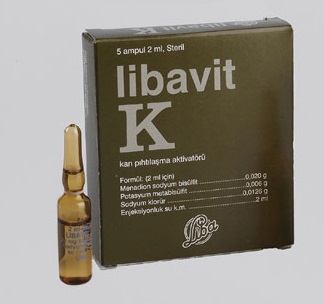
Libavit K Ampul - chapstick
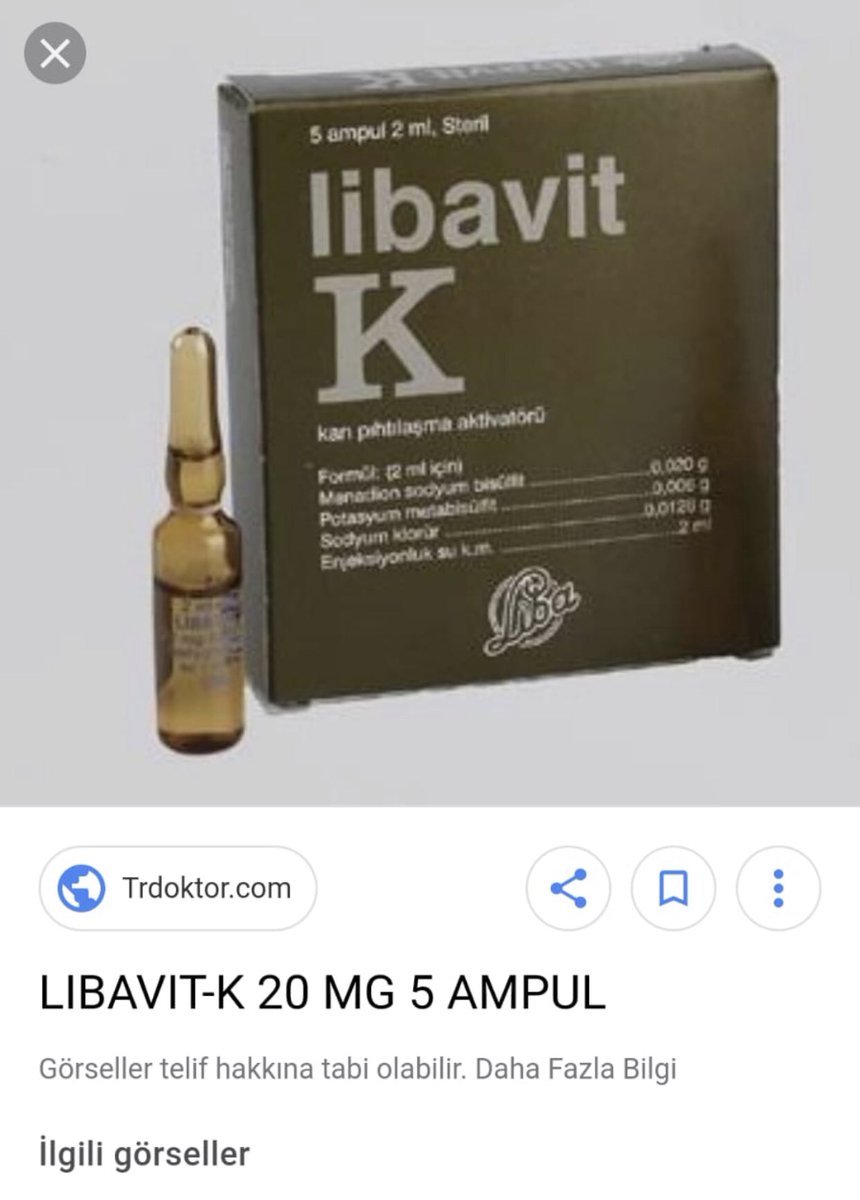
Libavit K Ampul - chapstick

Analysis of Libavit K ampule (20 mg/mL). | Download Table
Kocaeli Üniversitesi Tıp Fakültesi Çocuk Sağlığı ve Hastalıkları Anabilim Dalı Hematoloji Bilim Dalı Olgu Sunumu 27

Libavit K Ampul - chapstick

Analysis of Libavit K ampule (20 mg/mL). | Download Table
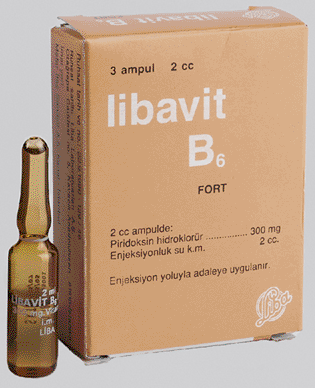
LIBAVIT B6 FORT 300 mg 3 ampül Formülü
Kocaeli Üniversitesi Tıp Fakültesi Çocuk Sağlığı ve Hastalıkları Anabilim Dalı Hematoloji Bilim Dalı Olgu Sunumu 27

Analysis of Libavit K ampule (20 mg/mL). | Download Table

Analysis of Libavit K ampule (20 mg/mL). | Download Table

K Vitamini İlaç, Tablet, İğne İsimleri, Yan Etkileri ve Kullanımı
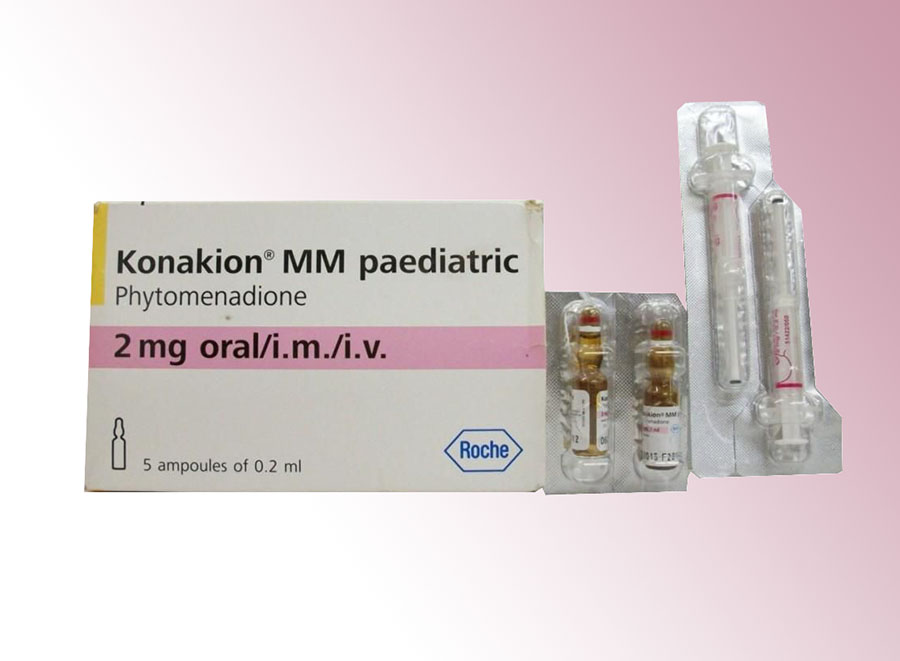
K Vitamini Ilaç Ampul - chapstick

K vitamini (Konakion MM, Libavit K, Vi-Plex K) 2, 10 mg İV ... - TTNet
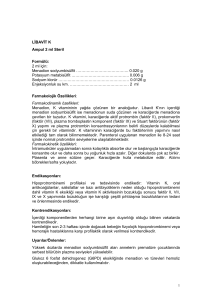
KimyaKongreleri.org

Libavit K Ampul - chapstick

Figure 5 from GC-FID and HPLC-DAD Methods for the Determination of Menadione Sodium Bisulphite Directly and by Converting Menadione Sodium Bisulphite to Menadione in Pharmaceutical Preparation | Semantic Scholar

Vitamin K Ampule - chapstick

Vitamin K Ampule - chapstick

Libavit K Ampul - chapstick

Polarographic determination of anticancer drug vitamin K3 with ...

Vitamin K Ampule Dosage - chapstick

Libavit K Ampul - chapstick
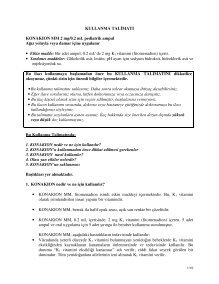
Konakion Magazines
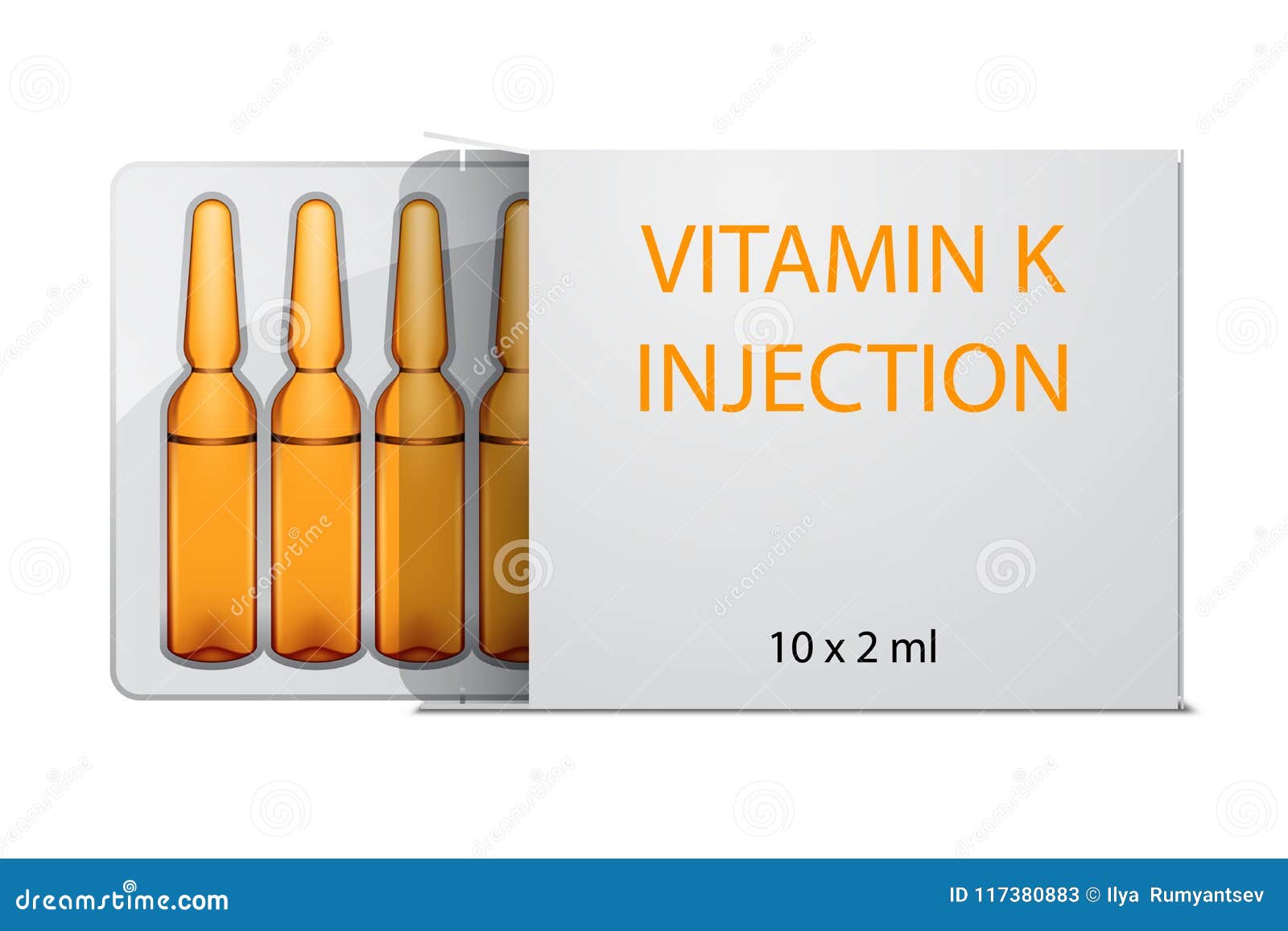
Vitamin K Ampule - chapstick

Libavit K Ampul - chapstick

Konakion Magazines

Vitamin K Ampule - chapstick
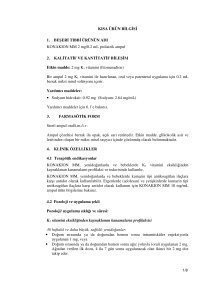
Konakion Magazines

Libavit K Ampul - chapstick

Vitamin K Ampule - chapstick
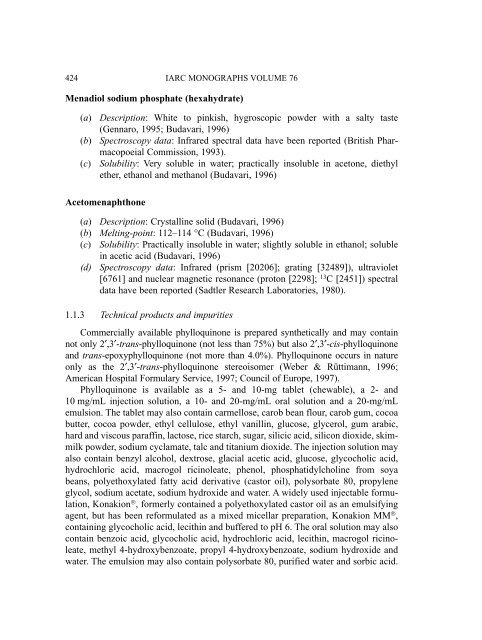
424 Menadiol sodium phosp

Vitamin K Ampule - chapstick

424 Menadiol sodium phosp
Vitamin K Substances
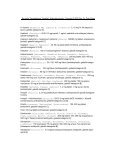
Konakion Magazines

Vitamin K Ampule - chapstick
Untitled

Libavit K Ampul - chapstick
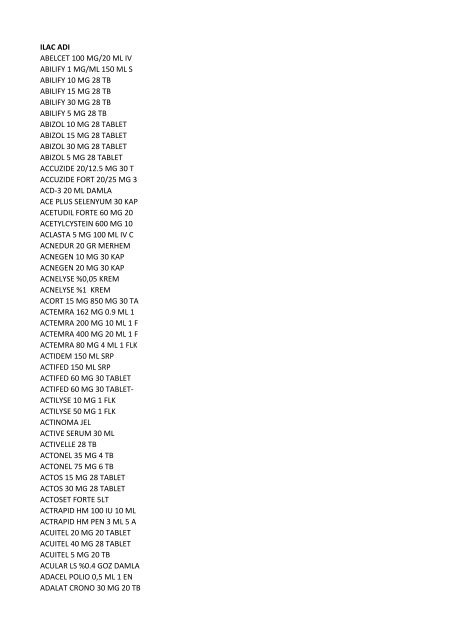
onkopharma pharmaceutical warehouse
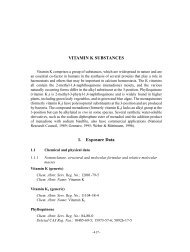
424 Menadiol sodium phosp
Posting Komentar untuk "libavit k"